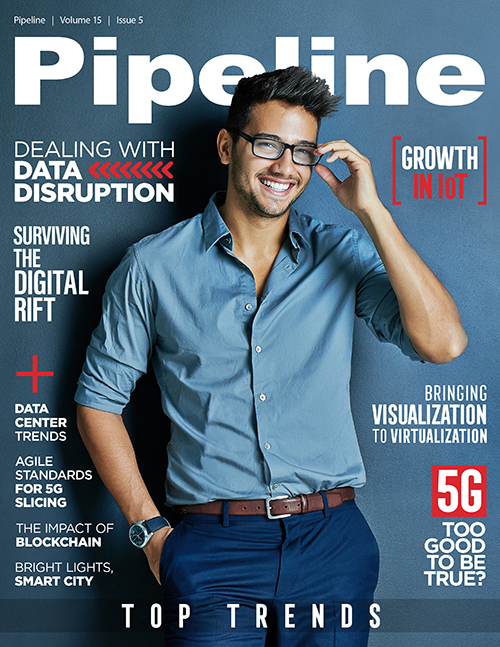Dealing with Data Disruption

Disruption is the single greatest threat to operations. And at the heart of disruption is change. An organization’s ability to manage and adapt to change can be directly correlated to its ability to succeed or fail. While change is constant, both the pace and impact of change have increased dramatically in recent years, and it’s predicted to go beyond what is humanly possible to manage. The bottom line is that organizations need help if they are going to be able to thrive.
Change resistance can spell disaster for an organization. Just ask Betamax, Blockbuster, MySpace, any brick-and-mortar retailer, or the taxi industry. Even within our own industry, different types of organizations have differing change proclivities. A small-to-medium or start-up business may be more inclined—and able—to change more rapidly. In fact, many new businesses—such as Amazon, Google, or Uber—were founded upon a premise of disruption. On the other hand, a telecom service provider may have been born as a public, government-regulated utility, possessing millions of dollars’ worth of legacy systems and assets—and the original implementers are long gone or resting in peace.
Pipeline isn’t a financial publication, but surviving disruption has become more than just paying lip services to change or adaptation. It has become fundamental to how a company is valued in the open market. As I write this article, Amazon, for example, publicly trades at over 126 times its price-per-earnings ratio (P/E). Alphabet (formerly Google) is trading at over 45 times P/E and broke 1 trillion dollars in market capitalization earlier this year. By comparison, AT&T, Comcast, Telus, Verizon and Vodafone—some of the world’s most advanced service providers—only trade between 5 and 20 times P/E. To perhaps put that contrast in better perspective, one share of Amazon stock would cost you $1,593.41 today, when the company generated nearly $180 billion in revenue last year. Compare that to AT&T, which earned roughly the same amount in revenue ($160 billion) last year, which you can pick up for just $30.29 per share. Simply put, if AT&T had the same valuation at Amazon, AT&T’s stock would be valued at over $1,000 per share—and that’s significant.
But transforming into a digital disruptor is a daunting task. It requires a unique balance of technology, automation and innovation. Those three elements are fundamental to transformation and must be infused throughout an organization’s systems, operations, and culture. We can and do spend a lot of time on each of those areas at Pipeline; but for the purposes of this article, let’s look at one example: Uber.
Uber set out to disrupt the taxi industry with innovative mobile technology. It capitalized upon the proliferation of 4G wireless technology and smartphones. Uber simply doesn’t exist without either. It then addressed fundamental manual processes that impacted the legacy customer experience, such as billing and car location. Traditionally, if you called a taxi cab, you would have to talk to a dispatcher, who would have to radio a cab driver, and then you might have to call back to find out where your car was. Then, when it arrived, you would have to figure out if the driver accepted credit cards, or you would perhaps even stop at a ATM to get cash if not. This process was a real pain, particularly when traveling internationally. With Uber, you can request a car, see where it is, and handle billing automatically through the platform. This enablement means low overhead for Uber due to the sophisticated data management and back-end automation that is in place. Uber knows who I am, where I am, what I need, and how to bill me for services—automatically. No phone calls, no dispatchers, no radios, no in-car credit card machines or cash handling. The very intent to disrupt the industry by leveraging the latest technology was cultural and a fundamental founding principal of Uber, the culmination of which is innovation.
So, it begs the question, what does it take for a large enterprise or service provider organization to become a disruptor? It takes a transformative and disruptive mission, advanced technology, automation, and innovation.
The Disruption Equation
The advent of new technologies—such as network virtualization, 5G, and the Internet of Things (IoT)—stands to transform almost every industry. Many of these use cases have yet to be defined. But we already know the opportunity is enormous, with billions of connected devices; virtual devices, functions and services; and the immense wireless and wireline connectivity required to support them. If these new technologies are leveraged with the intent to disrupt the underlying industries, the result will be compelling innovation. This is the opportunity that presents itself now to enterprises and service providers.
But, going back to two earlier points, the sheer scale is going to require massive automation—and humans can no longer keep up. Even if humans could keep up, manual processes are costly, requiring a greater investment in both people and equipment. They are prone to error, creating a greater frequency of faults. Manual processes also create a poor customer experience by taking more time and generating multiple unwelcome interactions. I’ll even go out on a limb here and say that people are not innovation, and you cannot innovate with people alone. The value of the human element (and role) within a disruptive environment is distilled down to purely the combination of the culture they create and expertise they possess. Perhaps it boils down to how focused they are on innovation versus operations.


















